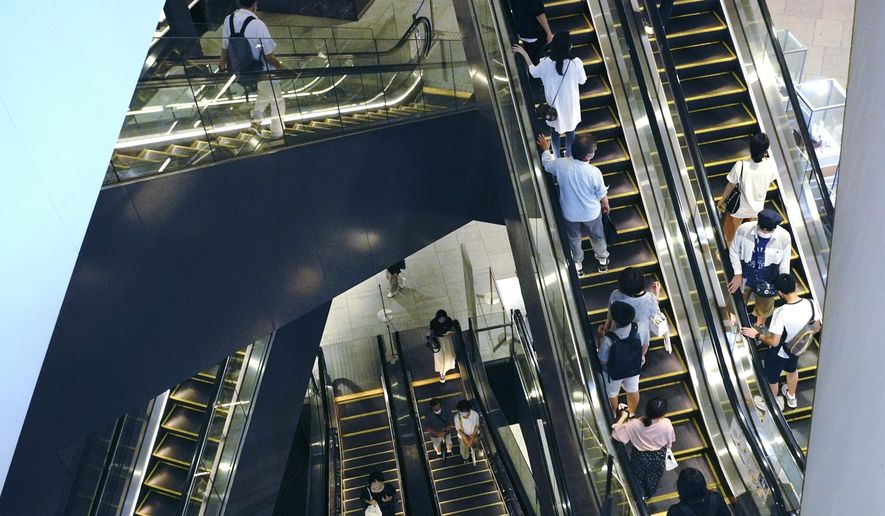TOKYO (AP) - Japan’s economy grew at an annual rate of 21.4% in the last quarter in a recovery from the shocks of the pandemic driven by both private spending and exports.
The world’s third largest economy had logged three straight quarters of contraction and was already in recession by the time the crisis hit. Preliminary data from the Cabinet Office released Monday show a distant road to a full recovery.
News that the economy returned to growth in the July-September quarter sent share prices higher in Tokyo. About an hour after the market opened the Nikkei 225 index was up 1.6%.
Japan, like the rest of the world, is suffering from the slowdown brought on by business closures, plunging tourism and travel and social distancing measures for COVID-19.
On a quarterly basis, the economy grew 5.0%. The annual rate measures how much the growth would have been if that had continued for a year.
The data showed improvements in private consumption, the main driver of growth, and exports, including vehicles and auto parts. The rebound was expected, although analysts warn it won’t be enough to mark a return to normal.
The economy shrank 8.2% in the April-June quarter; 0.6% in January-March and 1.8% in October-November 2019, according to Monday’s data. Growth was flat in July-September 2019, underscoring stagnant conditions even before the pandemic.
“The Japanese economy for July-September 2020 is still in a severe situation due to the COVID-19, but it is showing movements of picking up later in the quarter,” the government said in a statement.
The decline earlier this year was the worst the government had on record, at least since it began keeping comparable records in 1980. Japanese media reports characterized it as the worst since World War II.
Junichi Makino, chief economist at SMBC Nikko Securities, said the GDP data reflect a halfway recovery that is expected to continue at a gradual pace.
“The driver of growth will shift to the service sector,” Makino said in a recent report, stressing consumption growth in that sector tends to be moderate, compared to the consumption of goods.
“The momentum for growth on the macroeconomic level is therefore expected to slow down,” he said.
Japan has never had a total lockdown but incoming tourism has largely vanished. Many stores and restaurants are still open, and schools and government offices are mostly running as usual, despite widespread efforts in the private sector for remote working. Some shopping districts are packed, although nearly everyone wears masks.
The administration of Prime Minister Yoshihide Suga has been trying to balance the need to curtail the infection’s spread with keeping the economy going. That has prompted some criticism over policies such as the government’s “GoTo campaign” of discounts for domestic travel that some believe may have caused surging cases in rural areas, such as on the northern main island of Hokkaido.
Japan has had fewer than 2,000 deaths related to COVID-19.
Some companies have sunk into losses, mostly those related to travel and exports. Others like Nintendo Co. have held up relatively well, as people staying home turn to video games.
___
Yuri Kageyama is on Twitter https://twitter.com/yurikageyama




Please read our comment policy before commenting.